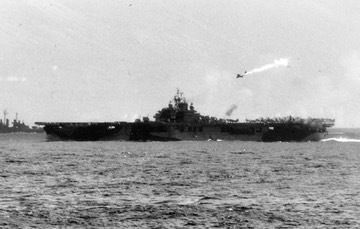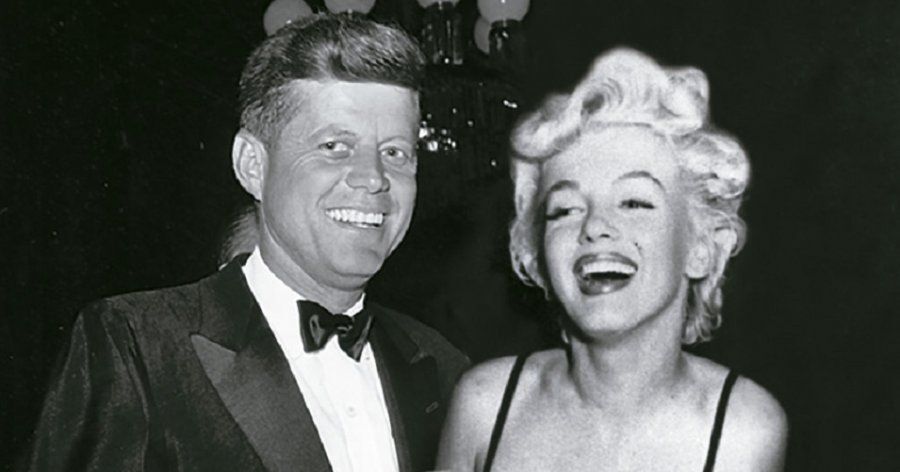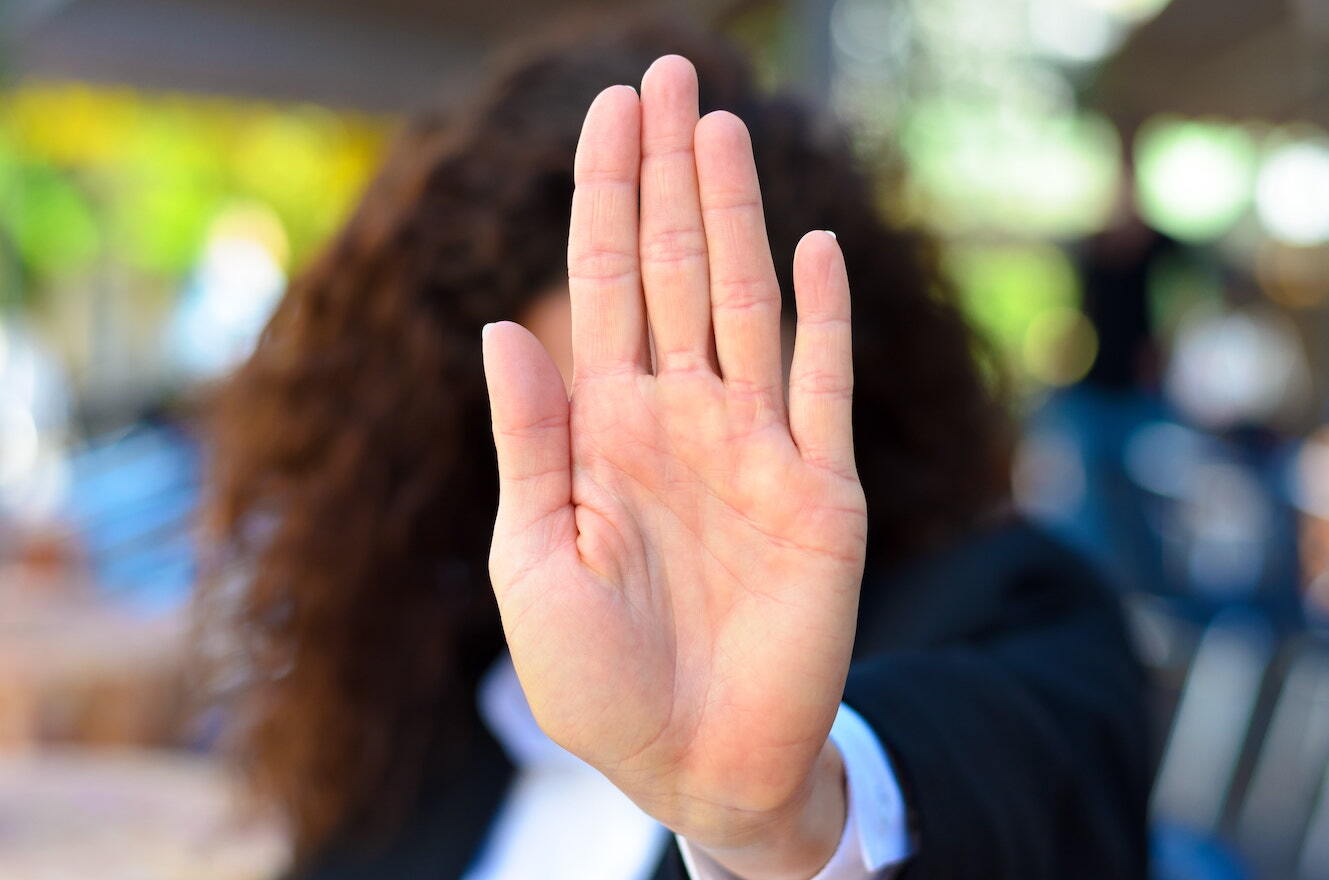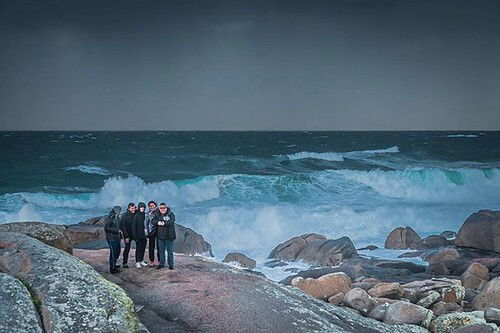BACK FROM THE DEAD

BACK FROM THE DEAD
by William Thomas
Somewhere in the western Pacific, the decks of a yankee aircraft carrier erupt in sheets of furious fire. POM-POM-POM-POM!!! Close aboard to starboard, the blurred shape of a Japanese Zero blossoms smoke and flames. A big bomb is strapped to its belly. Streaking straight on, the plane-turned-meteor arrows into the flight deck…
STOP FRAME
There's the Zero about to reach out and touch the carrier's forward elevator. The burning fighter is still under control. The pilot is still alive.
JOGGLE FORWARD BOOOOM!
The pilot is dead. He has died right before my eyes. He will continue to do so as long as I keep clicking the remote. Alive. Dead. Alive. Dead. Over and over and over again.
I am not getting off. I am looking for insight into the violence we do daily to ourselves, each other and our wounded planet. One lesson: Beware a flailing empire of aggressive ideologues backed to the wall. Bigger lesson: Crashing Earth on the implacable reefs of physics and denial, we are all kamikazes now.
CLICK
On a Moscow boulevard, a dashboard car cam catches a guy putt-putting past on a motor scooter. The car is slowing. He isn't. The rider is very much alive as he enters a broad empty intersection. And then he's not.
Before my eyes register ambush, a delivery truck zips in from the left of the frame. A terrible WHUMP! sends the rag doll rider flip-flopping through the air. Already dead or dying from the truck's huge broadside blow, he smashes into the concrete curbing with an impact no body is meant to absorb.
REWIND
Sergei? Nikolov?Nika? Lilliya? There he goes again. Not speeding. Not registering the traffic light. He must be high on the ride. Or perhaps he's thinking of a lover – – waiting at ho... WHAM! As I watch, the last sizzling synapses wink out. Again.
I ride, too. ‘lectric. Which is why every few months I make myself watch a fatal bike crash compilation. It's worth my life to re-imprint the need to stay sharp, lest I discover for myself how thinly the veil stretches between this breath and whatever comes next. The rider on the screen is long dead. But he's still helping me stay alive.

CLICK... CLICK…
Look, there's Marilyn Monroe brazenly bustily crooning “happy birthday” before a packed house of blue-blood glitterati. She will finish that tune very much alive. But she's dead, too. Except she isn't. Onscreen, the iconic screen goddess remains timelessly aflame with sex and infatuation.
Her paramour squirms in his seat. The President of the United States is not smiling. But at least he's alive. Was alive. We've all seen that clip from Dallas.
And those ferocious frames from Manhattan still plague our dreams. Who can forget that predatory silhouette suddenly materializing next to Tower Two? Like a magic trick, the improbably huge airliner embraces a corner of the building and appears to slip inside.
Nothing happens. It was all an illusion, a bad dream, the wrong channel. Then comes the flash of igniting Jet A. Billowing black smoke. Just like the crew of that carrier, hundreds of people die before our eyes. They will continue dying, repeatedly, relentlessly, as long as the networks keep playing those clips.
Google will take it from there.
“REALITY” REVISITED
Emphasizing vision over all other senses, the brain regards all visual input as “real”. To the cortex, everything viewed via the optic nerve is streaming reality. While our adult reasoning brain “knows” that streams of pixels aren't “real”, it's no match for three-million-years of reptilian reflexes dedicated to the notion that it's better to react-on-sight than label a mouthful of teeth an illusion and perish.
Labelling a film “documentary” – a record of something that “really” happened – seals the illusion-as-real. In this cortical confusion, videos of death and dying trigger the cortex to unleash the same emotional hormones that move eyewitnesses and moviegoers to weep or cry out.
TIME OUT
The camera abolishes time. So it can get spooky playing home video from last summer's lawn party. So good to see Aunt Martha again, laughing, sipping her drink, kissing Uncle Jake. Such a whirlwind! Before her stroke. Before she died. Seeing her dancing again is disconcerting, even disorienting. You “know” she's gone. But another part of your mind's going, “No, look! Aunt Martha's alive.”
She was. Then she wasn't. Now, like millions of family ghosts waving from that heavenly cloud, she can be brought back to life by pinching two fingers on a touchscreen.
Is this a good thing? The first commercial portrait studios were inundated by grieving parents wanting photographs of their still-born babies “sleeping” forever in their infant finery. No wonder the first photographers were accused of practicing witchcraft.
Today's witches and wizards carry cameraphones. And they are very busy indeed, especially when the reaper decides to show off within range of a cell tower. In a society that abhor's death and fears dying, what is this tsunami of historical and contemporary imagery showing people expiring in fires, crashes, explosions, gunshots, sinkings, suicides – and actual tsunamis – doing to our sensibilities? Even as we reach for more popcorn, why can't we look away?
CHECK THIS OUT
We all have our reasons for viewing reportage of once-living persons in slack-limbed death or the throes of agony onscreen. But what about the vast audience of network and online viewers who do not wish to see such imagery in their daily visual fare?
“Smartphones and easier Internet access make it increasingly likely that acts of violence will be recorded and then shared through those media, and Twitter’s default settings now make it more likely that we see them when they are,” comments a Dart Throwing Chimp. “Presumably, some of the organizations perpetrating this violence – and, sometimes, ones trying to mobilize action to stop it – are aware of the effects these images can have and deliberately push them to us to try to elicit that response.”
Already vast, the online opportunities for widely publicizing our most private final moments is expanding at the speed of simultaneous uploads by “users” worldwide.
Every second:
- 70+ new domains registered
- 660+ videos uploaded to YouTube
- 1,500 blog posts
- 6,600+ images to Flickr
- 7,364 Facebook wall posts
- 98,000+ Twitter tweets
- 650,000 Facebook status checks
- 694,445 Google Searches
- 168 million emails sent [Go-Globe.com]
WHEN VIEWERS CAN'T BEWARE
Viewing choice can be hijacked on Facebook, where “people 'share' violent videos that now play automatically” on other members' timelines, worries Leah Backus. “When dealing with a large audience on social media you cannot filter negative content before it reaches you. You can’t period. It's upsetting that I had to be subjected to negative images that spreads like wild fire through algorithms and by force. On top of images you have negative tweets and posts on Facebook that adds to the recent graphic picture you've seen. It's not cool.”
With every viewed image inserted unmediated directly into our central nervous system for the remainder of our conscious lives – isn't “viewer discretion” paramount? Isn't personal choice of what we feed our heads a “human right” as basic as getting to choose what we take into our bodies?
“By sharing negative content, I think some people think that they are being activists of some sort,” Backus concedes. “But they’re really just ruining people’s days without asking. Bringing the Heart of Darkness into social media allows terrorists to use horror even more effectively as a strategy, and magnifies the reward for doing so. For 'normal' people, exposure to these images is horrifying and disturbing. For those of us with anxiety disorders it can be literally life-threatening.”
Backus fears for her soul, saying, “I can’t imagine that the constant barrage of these kinds of images is not causing some damage under the surface of my psyche every single time I come across it, which these days appears to be every day.” [Dart Throwing Chimp]
EXPLOITATION OR OBLIGATION? “
There is an aggression implicit in every use of the camera,” Susan Sontag wrote in her book-length essay, On Photography. “Even when photographers are most concerned with mirroring reality, they are still haunted by tacit imperatives of taste and conscience.”
When I worked as a “photog” for Canada's top photojournalism newspaper, The Vancouver Sun, my personal working rule was that people in newsworthy public situations could be photographed and printed in a newspaper seen by more than a hundred-thousand readers. Canadian law backed me up.
But ethical dilemmas occur when the person is caught in an embarrassing situation. Then my decision whether to click my Leica's shutter depended on the answer to my final criteria: “Does the public's need to know supersede this person's right to privacy?”
I was once assigned to “shoot” a woman accused of witchcraft. With some six-million women murdered in religious witch-hunts, I was already uncomfortable with this assignment before the judge threw out the case. Though I was nearly fired for refusing to “take the shot” of this stressed-out woman leaving the courtroom, I assured the photo editor I would make the same decision again.
The issue is exploitation. (Rhymes with “titillation”.) Do disaster/war photographers and the viewers of their videos and photographs exploit their “subjects”? Is every “subject” not being paid to enhance a photographer's livelihood and reputation being exploited?
Which brings us back to intent. On the Highway of Death leading out of a still-burning Kuwait, just before the official cease-fire Ken Jarecke made a gruesome image of an Iraqi soldier burned to a blackened cinder as he attempted to lift himself through the shattered windshield of a blazing truck. Jarecke was travelling with a US Army public affairs officer, who told him, “I don't really get my jollies out of making pictures of dead people.”
Jarecke didn't either. But the photojournalist responded, “If I don't make pictures like this, people like my mother will think what they see in war is what they see in movies.”
No publication in the United States would touch his iconic image. (Picture editors there insisted there was something “dishonourable” about photographing the dead. As if media glorification of diabolically vicious weaponry, “set to pulse-pounding music” and endless replays of exploding downtown buildings – with no mention of the office workers blown apart inside – wasn't.)
“Not every gruesome photo reveals an important truth about conflict and combat,” Torie Rose DeGhett wrote in The Atlantic Monthly. “Sometimes though, omitting an image means shielding the public from the messy, imprecise consequences of a war – making the coverage incomplete, and even deceptive. In the case of the charred Iraqi soldier, the hypnotizing and awful photograph ran against the popular myth of the Gulf War as a 'video-game war' – a conflict made humane through precision bombing and night-vision equipment. By deciding not to publish it, magazine and the Associated Press denied the public the opportunity to confront this unknown enemy and consider his excruciating final moments.”
The UK's Observer newspaper and Libération in France both published Jarecke's disturbingly salient image. “There were 1,400 [Iraqi soldiers] in that convoy, and every picture transmitted until that one came, two days after the event, was of debris, bits of equipment,” observed the Observer’s pictures editor, Tony McGrath. “No human involvement in it at all; it could have been a scrapyard. That was some dreadful censorship.”
So was omitting the fact that strafing a column of fleeing refugees and soldiers is a war crime. Those butchered “Iraqi soldiers” – as I learned first-hand – were starving, terrified barefoot conscripts. But many of the 10,000 to 15,000 individuals gunned down, napalmed and blown to bits on that long lonely stretch of two-lane desert highway were guest workers and other civilians fleeing Kuwait City. (I counted two turret-less tanks amidst that junkyard of burned-out school buses, fire trucks and taxis.)
WTF? is the most vital leading question in public discourse. Stella Kramer, who worked as a freelance photo editor for Life on four Gulf War special-editions, says the decision not to publish Jarecke’s war photo was less about protecting readers than preserving the dominant narrative of the good, clean war. U.S. magazines “were very sanitized,” she says. “So, that’s why these issues are all basically just propaganda. As far as Americans were concerned, nobody ever died.” [Atlantic Monthly Aug 8/14]

THE VIEWER'S RESPONSIBILITY IS NOT TO TURN AWAY
“Is it morally justifiable to work as a photographer in war zones and disaster areas? Am I producing 'War Porn'?” asks war photographer Christoph Bangert. “We remember in still images and that’s why we as photographers have a great obligation. This argument that these pictures are dehumanizing or pornographic always comes up. It’s a legitimate argument because the things that happened to these people are essentially dehumanizing. If you say it is morally wrong to look at them, you avoid being confronted with these events. This always makes me angry.
“We should also ask ourselves as viewers: What do we need to see? What do we actually have an obligation to look at? We have great responsibilities as consumers and viewers of images, and we should never forget about this obligation,” Bangert says. “Just imagine if nobody had published pictures of the Holocaust or of the liberation of the Nazi camps. That would mean that it would be very difficult for us to remember these events.” [Lens Blogs NY Times Nov 24/14]
What about our obligation to protect the dignity of those we film or photograph? What if the point of these images is to deliberately show how human dignity has been stripped away by rape or corporate predation? Or an invader?
BUY THE TICKET AND PAY THE PRICE Whatever our reason for viewing imagery of disfigurement and death, once seen there is no way to remove images seared forever into our nervous system.
“The empathic viewer is left distressed and helpless to undo the suffering that was endured. As such, viewing these images inflicts trauma,” declares Dr. Deborah L. Davis (Ph.D) in Psychology Today. “Our brains are soft-wired with mirror neurons, which allow us to observe, empathize, and imitate. It’s as if behaviors and expressions of feeling are contagious.”
And instantly contiguous, linking victim and viewer. Whether involuntary or deliberate, looking once, we pay the price in perpetuity:
“Here’s what we know about the effects of exposure to violence,” Dr. Davis reveals. “Whether the violence is real, reenacted based on real events, or fiction, when you witness cruelty and empathize with the victim, you experience the trauma vicariously. That’s why witnesses to violence are considered victims too. It is especially traumatizing to witness cruelty when you are powerless to prevent it.”
I call it this syndrome, “Another Bus Crash In Bolivia”. Sure, I regret that another bus has plunged off a cliff, killing all onboard and leaving families parentless and bereaved. But what does this have to do with me? What can I do about it? And above all: Why do I need to know this now?

MIRROR MIRROR ON YOUR WALL
What about toddlers playing with iPhones? Mirror neurons and brain regions undeveloped in “thinking, learning, reasoning, and emotional control” make children “especially vulnerable” to violent imagery, Dr. Davis adds. “Effects include reduced sensitivity toward others, being more fearful, and behaving more aggressively.”
The best antidote is the off switch. “Let’s not poison our mirror neurons,” she urges. “Each of us can play a vital role by refusing to drink the poison... Don’t censor – boycott.” [Psychology Today Dec/13]
Avoidance is good advice when it comes to Hollywood's increasingly violent and misogynist fare. (Especially right before bedtime.) But documentary images, often made at great risk to the photographer, demand a more nuanced choice.
The key decision is avoiding exposure to “toxic” videos, photos and games gratuitously depicting human degradation (especially of women) – and refusing to turn away from horrific images of, say, babies grotesquely disfigured by the radioactive munitions fired by U.S. forces during 13 years of savage aggression against the mothers of Iraq.
(Before dismissing “savage” as “anti-American” hyperbole, click Google Images for “du babies” if you dare. Then contact your congressional representatives, along with the current CEO of USA Inc.)
THE CENSORSHIP DIVIDE
Unfortunately for the would-be “liberators” of millions of maimed, traumatized and violently displaced families, the Arab world is not viewing sanitized clips showing the aftermath of drone strikes on:
1. Families living inside mud and plaster homes.
2. Families digging out the bodies of relatives, spouses and neighbours killed in a follow-up drone attack.
3. Families attending the funerals of their loved ones before becoming corpses themselves in a “triple tap” drone strike.
The fundamental disconnect between the images fuelling Arab outrage and ongoing “American” ignorance of the terrorism being perpetrated in their name is tamping yet another explosive reckoning between the reality of an anguished parent and their child's torn flesh, and bring-me-another-beer denial.
“Photos like Jarecke’s not only show that bombs drop on real people; they also make the public feel accountable,” wrote Rose DeGhett. As David Carr seconded in the New York Times, war photography has “an ability not just to offend the viewer, but to implicate him or her as well.”
Poor propaganda choices can also blow-back on the perpetrators. “What about the journalists and policymakers and others” who saw those online images of the beheading of freelance journalist James Foley? asks Leah Backus. “How did that exposure affect them, and how much is that emotional response shaping the public conversation about the threat the Islamic State poses and how our governments should respond to it?”
Though US “news” is tightly “managed” by a handful of corporations ensuring their viewers remain anxious enough to need another hit of “feel good” endorphins that accompany shopping, without becoming so freaked-out they start demanding reforms. Fortunately for the media moguls, few “consumers” question the motives behind editorial choices to include or scrub disturbing imagery.
So how to proceed?
Outraged, grossed out, eyes wide open or tightly shut, or simply indifferent – in the end, our consumption of and reaction to violent imagery is still our choicenot every time we click a link, open a news magazine or turn on the tube. When your need to confront the unpleasant truths of national policies carried out in your name overrides your desire to know, it's always better to look.
And ponder.
Photo Captions
Kamikaze attack on USS Essex